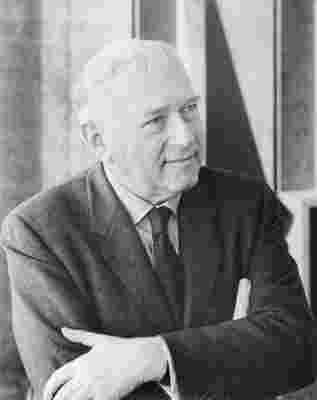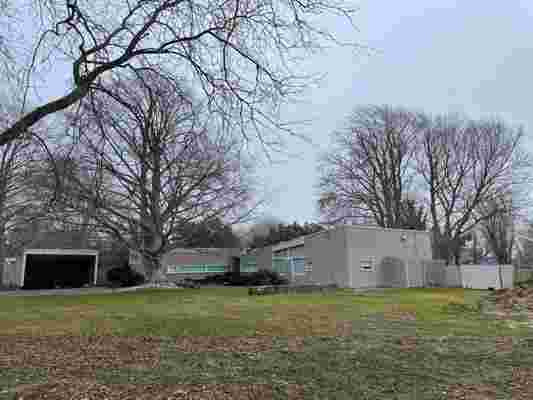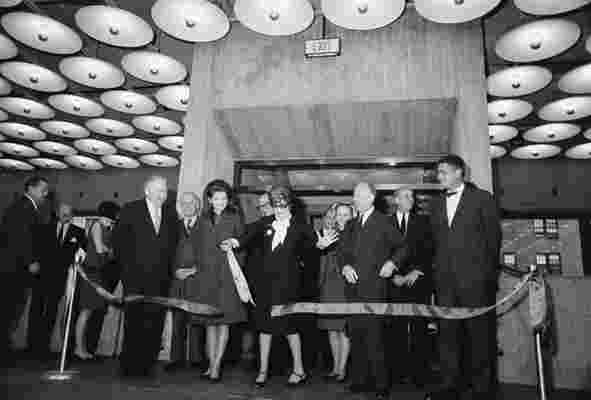
The mid century modern homes that still stand proud are proof that the most influential design movement’s reign is still very much in effect. And if there is one group of furniture designers and architects whose instantly recognizable work transcends trends as much today as it did when it emerged, it’s those belonging to the mid century modernist movement. From Florence Knoll ’s tufted three-seat sofa to Isamu Noguchi ’s sculptural paper lanterns, the furniture and mid century modern homes that emerged throughout post-war Europe (and eventually sweeping across the U.S.) were a poignant response to the state of the world. And today, decades after the modish movement came to an end, mid century pieces and structures have been inducted into unofficial halls of fame to preserve their integrity, legacy, and even existence. That’s why fans of modernist design were shocked to find out that Hungarian-born architect Marcel Breuer ’s Geller House I, commissioned on Long Island in 1944, was demolished on January 25.
Named after its residents, Bertram and Phyllis Geller, Geller House I (there would later be a Geller House II, commissioned in 1969 just down the street from the original) boasted what Breuer called a bi-nuclear design: The living, dining, and kitchen areas were separated from the sleeping quarters by way of an entry hall. The home featured quite an extensive collection of furniture that the architect designed himself. There was also a Jackson Pollock painting that the homeowners commissioned specifically for their Lawrence, New York home. “I love the way Breuer expresses his chimneys: You can see the stone on the inside and on the outside. The irony of the demolition photos is that the only thing you see still standing is the chimney,” says Liz Waytkus, executive director of Docomomo US , a non-profit organization dedicated to the preservation of modern architecture.

As is the case with so many homes—especially in the U.S.—the beloved Geller I house changed hands a few times. The Gellers deeded their home to their son and his wife, Burton and Helene Geller, who sold the home in 1992 to Edward and Laura Labaton. Seeing how nearly 30 years had passed since the home was built, the new owners commissioned John F. Capobianco to make a few much-needed alterations. Like the Gellers, the Labatons sold the Geller House I in 2020 to Shimon and Judy Eckstein, who would be the last to enjoy the home’s mid century splendor.
For the same reason young renegades wouldn’t graffiti historic landmarks, design aficionados wouldn’t tear down a mid century icon—at least, they aren’t supposed to. It’s an unspoken rule. Perhaps the most egregious offense? It was knocked down to make room for a tennis court. The classic mid century structure was apparently knocked down to combine two plots (with room to create a larger home) and build the tennis court.

Breuer wasn’t just an architect and furniture designer who happened to live during one of the world’s most influential movements; he is one of the most recognizable names to emerge from the movement, and his legacy is proof. Marcel Breuer’s chairs—including the highly coveted Cesca —may have made him famous, but his architectural triumphs will forever be remembered. He designed everything from beach houses in Cape Cod to the Whitney Museum of American Art , a brutalist concrete masterpiece in the heart of New York. His work is history that—in Lawrence, New York—has been erased. Did we mention that the Geller House I was Breuer’s first residential project?
At just 19 years old, he enrolled in Germany’s famed BAUHAUS , where he honed his skills and developed his highly specific style. The tubular steel pieces, including the Wassily chair, brought him the international acclaim he deserved. That said, he wasn’t as esteemed for his houses as he was for his furniture. During his time as a professor at Harvard University, he actually established an architecture practice with his design mentor, Walter Gropius.
Luckily, the architect’s collection of buildings still prevails throughout the world—from Massachusetts to California. He designed more than 100 buildings just in the U.S. that still—and will—stand proud. “If you look at anything Breuer completed earlier that the Geller House I, you can still see the connection to Gropius and the influence of international style. The houses were much more boxy and had flat roofs. And here’s Breuer doing a butterfly roof on his first house. It was expressive,” Waytkus adds. That sense of expression still reigns throughout the Marcel Breuer’s chairs, tables, and shelving units, and especially so in his homes that are still standing.

Leave a Reply